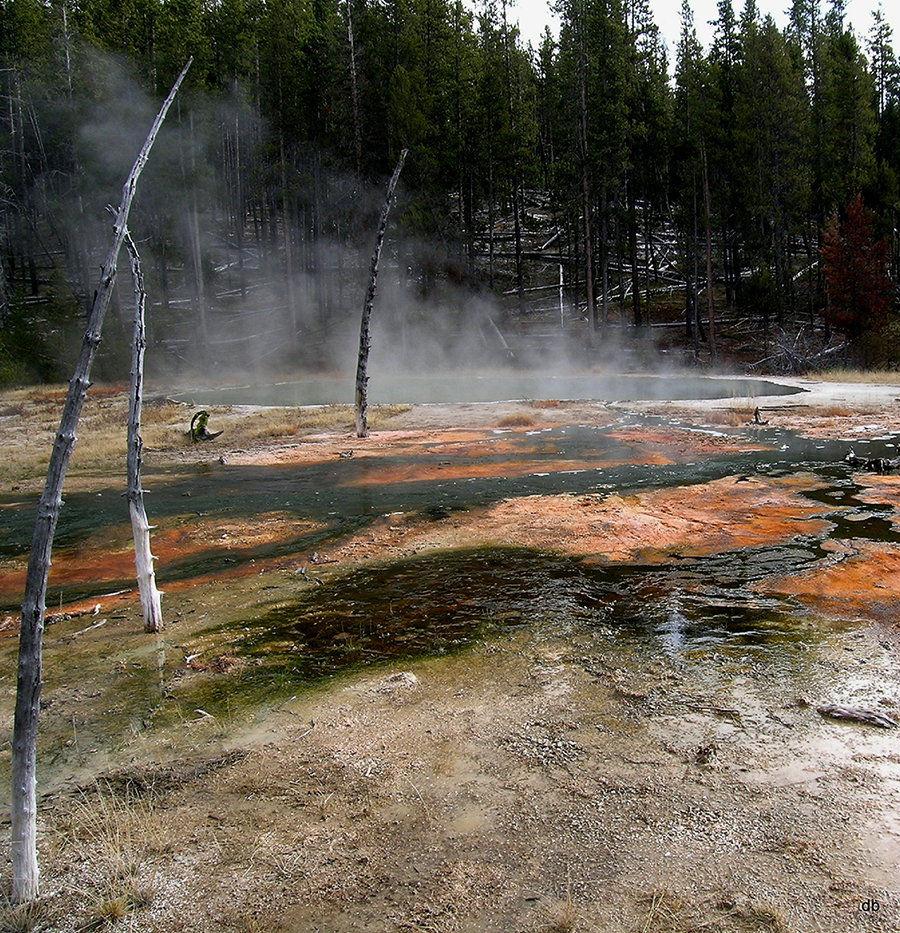
Yellowstone National Park, Octopus hot spring biofilms (Courtesy of Devaki Bhaya)
Photosynthetic microbes play a major role in the Earth’s complex biogeochemical cycles. The vast populations of photoautotrophic cyanobacteria in the oceans, terrestrial and freshwater environments fix significant amounts of carbon and nitrogen. These phototrophic hosts are prey to viruses that release carbon and other nutrients, so the long term objective is to quantify dynamic interactions between phototrophs and their virus predators. This will help to build quantitative, dynamic and predictive models of host-viral interactions and the effect on carbon and nutrient cycling, which is directly related to the DOE mission. It also offers exciting opportunities to address fundamental questions of evolution in the context of community structure.
Proposer: Devaki Bhaya, Stanford University
Proposal: Cyanophages and Cyanobacteria in Extreme Environments